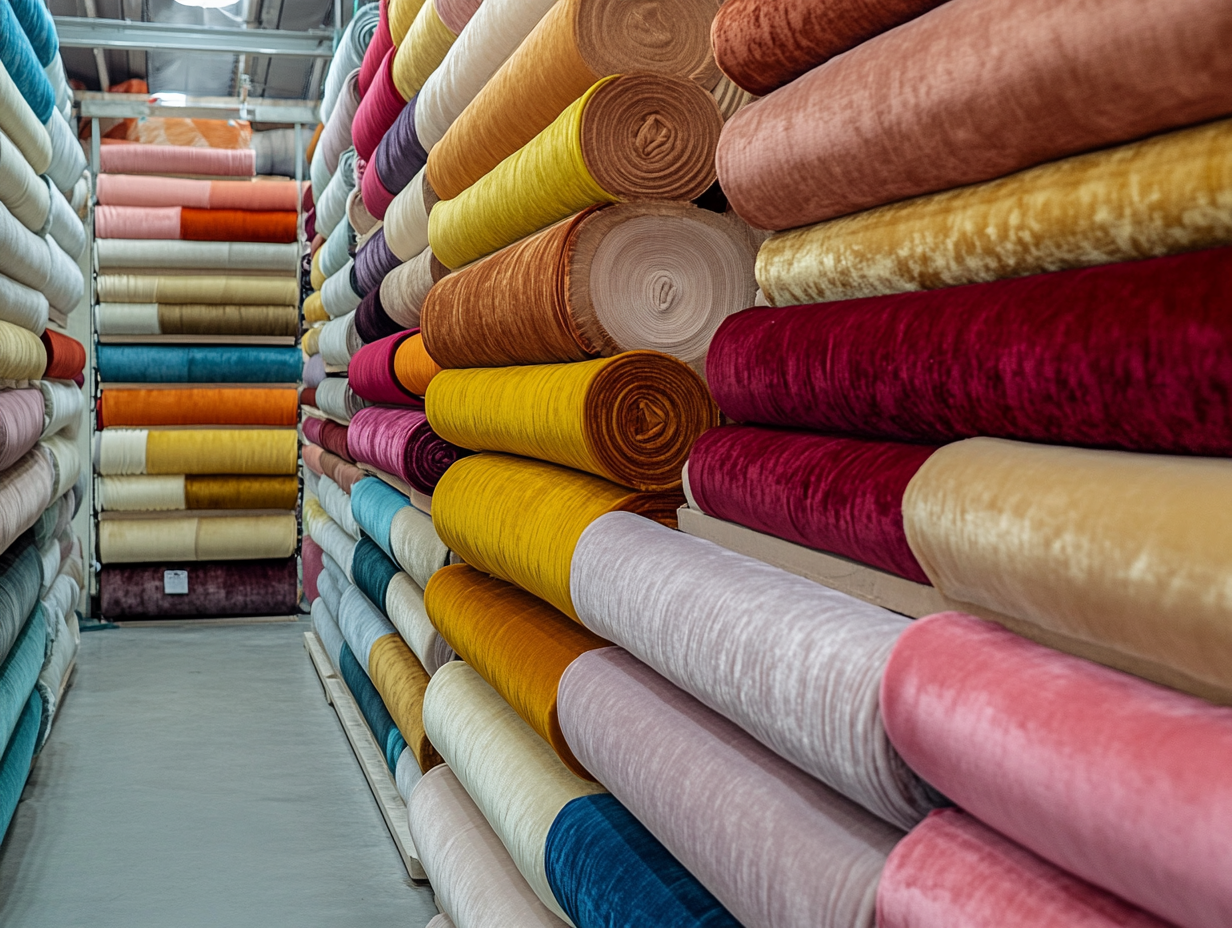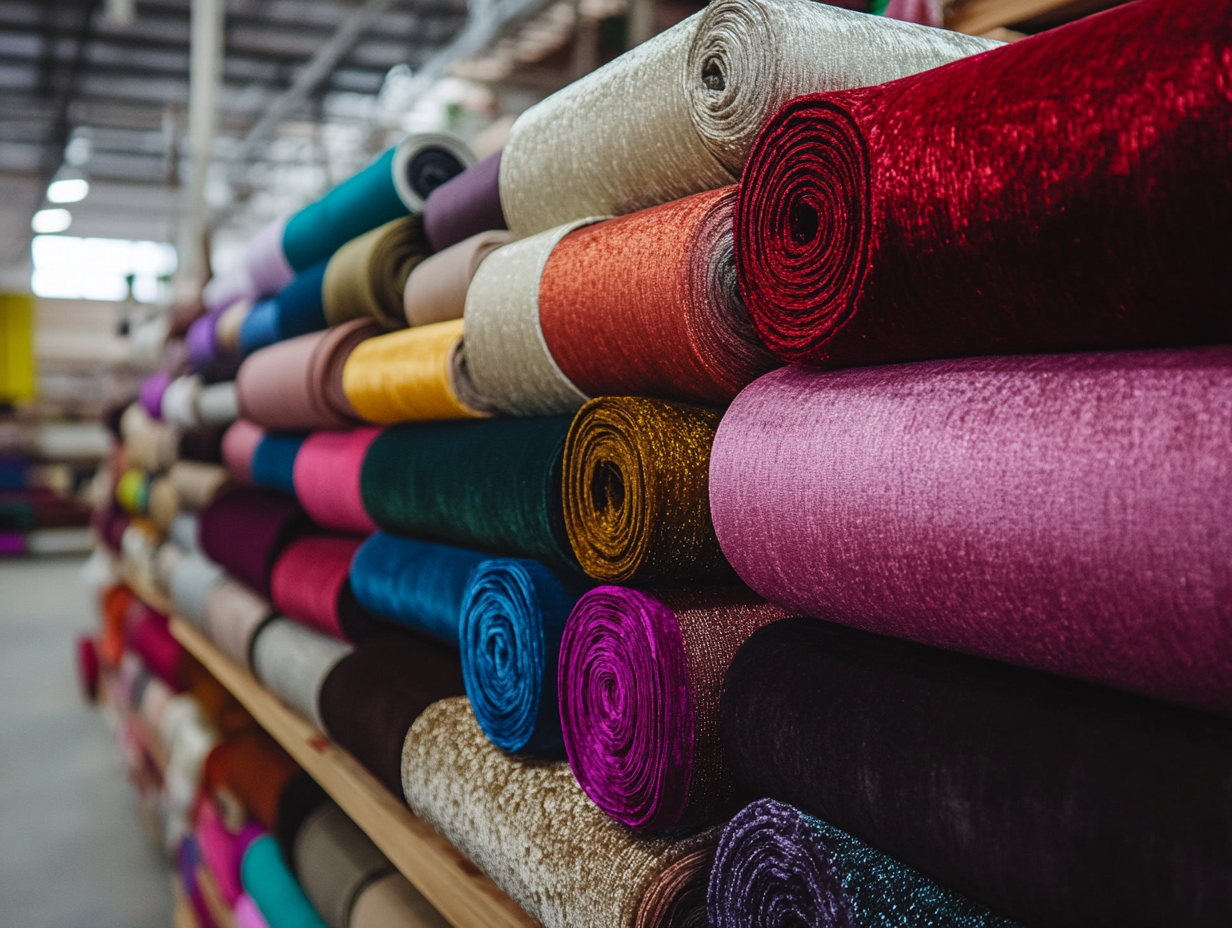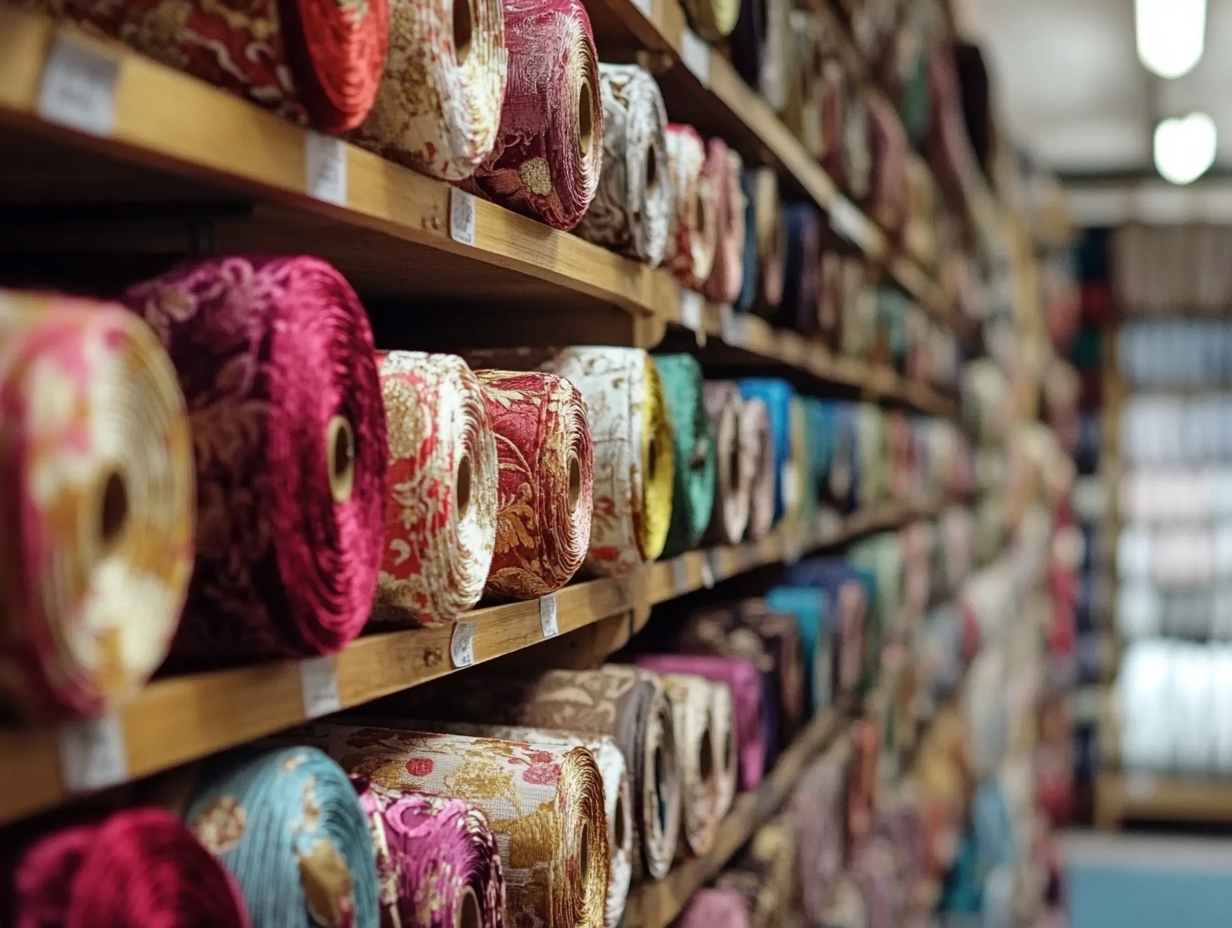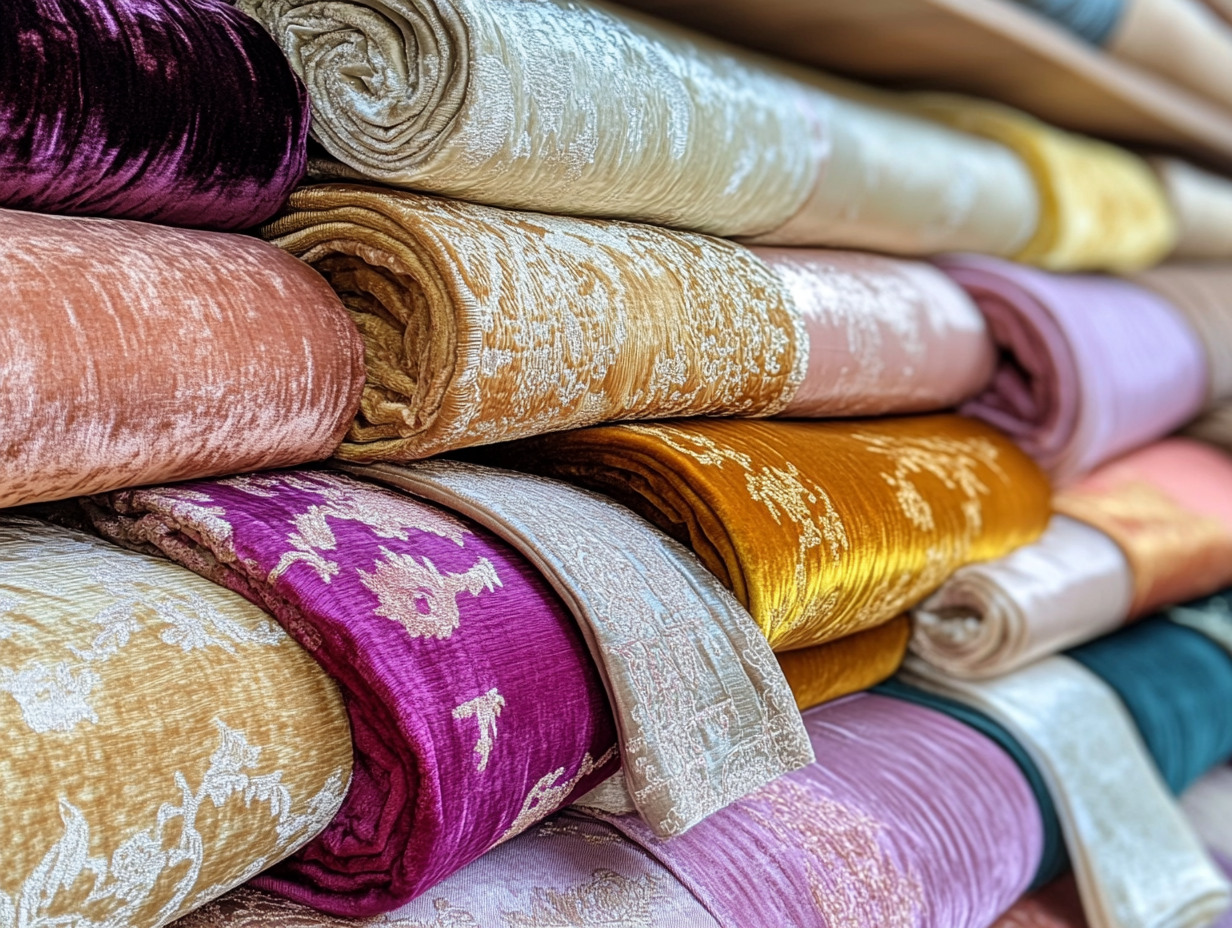Table of Contents
silk viscose velvet is truly a unique and luxurious fabric, a thing in demand by many designers and consumers alike. Silk and viscose give this fabric its special texture and shine, which really lends itself to elegant clothing lines and even the beauty of home décor applications. But the more demand there is for this lovely fabric, the greater is the need for global sourcing standards. Manufacturers and retailers must find their way through the intricacies of quality, sustainability, and ethical practices in order that they may live up to consumer expectations while complying with responsible sourcing guidelines.
With this blog, we will discuss the subject of silk viscose velvet fabric sourcing regarding global standards, consumerities, and some of the main variables determining quality and sustainability. We will touch on different industry certifications, environmental impacts, and the necessity of transparency in the supply chain. In bringing attention to key factors, the service offered should become valuable, from the producers in this sector to fashion working with stakeholders within this industry, which should hopefully build a better background for sourcing this beautiful fabric.

Understanding Silk Viscose Velvet: Composition and Characteristics
As sustainable practices have become more central to the fashion industry, silk viscose velvet production is, nevertheless, coming increasingly under the spotlight. Tight environmental standards and changing consumer tastes have made the need for environmentally-friendly materials more urgent than ever. In response, new developments in viscose production seem to offer a picture of a greener tomorrow, and companies will regenerate while sustainably sourcing to manufacture high-end textiles with relatively low environmental impact. Recently obtained eco-viscose shows the possibilities of establishing a circular textile economy. Manufacturers who adopt sustainable sourcing practices and embrace new technologies-integrating blockchain for traceability-should ensure that their operations are free from depriving forests and pollution. The challenge is to coalesce aesthetics with ethics, a challenge critical to the sustenance of our planet and indeed to the very existence of the fashion industry.

Key Global Standards in Fabric Sourcing
An opulent fabric, silk viscose velvet, is characterized by its unique blend of softness, sheen, and durability. Silk viscose velvet combines silk and viscose fibers to produce a fabric that embodies the glamour of silk but still breathes and is comfortable like viscose. The glossy sheen of silk makes this fabric an instant favorite among well-dressed consumers, both for home décor elements and high-fashion creations.
Another characteristic of silk viscose velvet is the versatility of designs associated with it. Trends witnessed in fashion events recently emphasize this very versatility; bold hues and avant-garde silhouettes are getting major attention. Designers often mix fabrics these days, with mixes of silk and denim being a prime example of modern takes on antiques. This fabric is steeper in ecological practices that are above and beyond just looking good. Such features will keep silk viscose velvet a timeless and stylish pick for any savvy contemporary customer.

Sustainability Practices in Silk Viscose Velvet Production
In the international sourcing of fabrics, compliance with standards becomes an imperative component for quality and ethical practices. The ever-increasing trend of cyber scamming, especially in Southeast Asia, has signaled the critical need for transparency and integrity in sourcing operations. Firms would not want to be associated with unverified suppliers, as this would easily make the firms liable or guilty of the forged practice of really being under forced labor and fraud.
Also, new initiatives like the freshly launched platform by Alibaba are paving the way for a more reliable and seamless sourcing process. Such innovations can enhance the procurement landscape by providing businesses with tools to streamline their operations while upholding standards that contribute to sustainability and responsible sourcing. As the world changes, so do sourcing trends: to flex with the times in the textile and apparel industry, places like India and Vietnam will remain among the most important markets that must put a priority on the effective transformation of all sourcing standards in the world.

Ethical Considerations in Sourcing and Manufacturing
The supply chain is important to control for ensuring quality and compliance when sourcing silk viscose velvet fabric. Manufacturers must comply with international regulations that protect the integrity of the materials used. The companies can minimize the risk factor of inferior products and questionable practices through good testing protocols and transparency with suppliers.
Quality assurance does not begin and end with sourcing; it is intertwined throughout the production process. Regular auditing and compliance checks help produce the required standards, similar to the sports world where athletes are selective in their choice of equipment for maximum performance. By promoting quality at every stage, from raw materials to finished products, companies can set an eco-friendly supply chain that can meet the ever-changing demands of today's consumers.With our commitment to quality control, we ensure we can supply products according to international human rights and environmental protection standards.
Navigating the Supply Chain: Ensuring Quality and Compliance
Ethics have significant influence over how processes are structured within the network of fabrics, particularly those luxuriously demanded like silk viscose velvet. For instance, manufacturers and suppliers cannot source if a method is not specific or related to the sources of the raw materials or the manner in which the workers are treated. On the other hand, consumers would be influenced by the increasing public awareness about the environment when making purchases. Therefore, it is important to support an ethical standard for ethical sourcing that can also accept market demand but is at the same time very social-responsible.
Globalization, as a phenomenon, has broadened the need to mobilize interlinked networks which support multinational companies in the sourcing practices. Such technologies tend to provide enhanced visibility within the supply chain and improve tracking of fabrics from field to retail. Therefore, there are high chances that an organization would be upholding its silk viscose velvet fabrics with quality and ethical standards while radiating a reputation of integrity within the competition-riddled textile market.
FAQS
Silk viscose velvet is a luxurious fabric made from a blend of silk and viscose fibers, known for its softness, sheen, and durability, making it ideal for high-fashion garments and home décor.
Silk viscose velvet is versatile and adaptable, with designers showcasing it in bold colors and unique silhouettes, reflecting modern interpretations of classic styles at fashion events.
Sustainability is increasingly important in silk viscose velvet production, with companies adopting eco-friendly practices and materials to minimize environmental impact and respond to consumer demand for sustainable fashion.
Companies can ensure ethical sourcing by adhering to global standards, remaining vigilant against unverified suppliers, and supporting initiatives that promote transparency and integrity in their operations.
Innovations in viscose production, such as regenerative practices and the use of eco-viscose, are emerging to create high-quality fabrics while reducing environmental impact.
The fashion industry faces the challenge of balancing aesthetic appeal with ethical responsibility, necessitating sustainable sourcing methods and technology to ensure a reduced carbon footprint.
Traceability, often facilitated by technology like blockchain, is important in fabric production as it helps ensure that manufacturing processes do not contribute to deforestation or pollution and supports responsible sourcing.
India and Vietnam are emerging as vital hubs for fabric sourcing in the textile and apparel sectors, needing to prioritize compliance with global sourcing standards.
The rise of cyber scamming, particularly in Southeast Asia, has highlighted the critical need for transparency and integrity in fabric sourcing to avoid supporting forced labor and fraudulent practices.
Silk viscose velvet contributes to sustainable practices through the use of eco-friendly materials, sustainable sourcing, and innovations in production that minimize environmental impact, supporting a more circular textile industry.